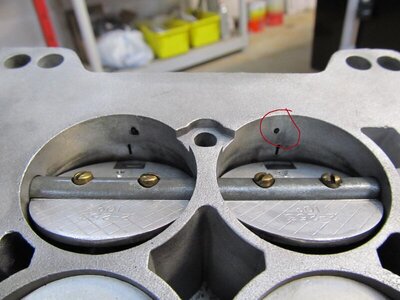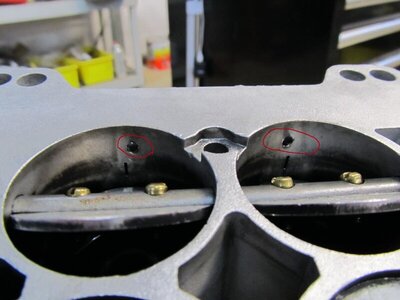Well I think I am getting a little closer. Took carbs apart again and noticed on the venturi cluster gaskets that the new ones had small corners where the old ones were rounded, and I think it prevented the venturis from seating against the gasket correctly, so I trimmed them. BUT I noticed that on one carb the mixure screws at 1.5 turns stuck the pointed part quite a ways into the bore, and on the other carb the points were just entering into the bore. Figured the mixture screws were incorrect for one of the carbs, but when I remove and measure them they all measure 1.4 inches. Noticed on one carb the screws gently bottom out pretty quickly, where on the other they screw in a lot and completely compress the spring before stopping. Took a look and it seems that someone overtightened them in the past and it punched the hole where they normally seat out so that they don't stop at that small opening in the bore where I think they are supposed to bottom out?
How badly would this affect the way the car runs at idle? I think even if I tried to adjust by counting the turns in from starting on the good carb and matched that on the bad carb so they they are both pretty close to the same distance into the bore that it would still not be correct since the hole size for the tip has been enlarged? Am I screwed and need a new core?
I took some pics, one carb has one mix screw that when lightly bottomed fits the seat in the bore (circled in red), the other seems slightly broken and allows the screw to enter a little farther into the bore. The other carb is a mess. Both screws lightly bottomed ends up maxing out the springs and as you can see the screws end up bypassing the seat completely as they are both blown out. I would think these would just allow fuel to flow unregulated?
Thanks as always
Forrest
View attachment 1266244 View attachment 1266245


















